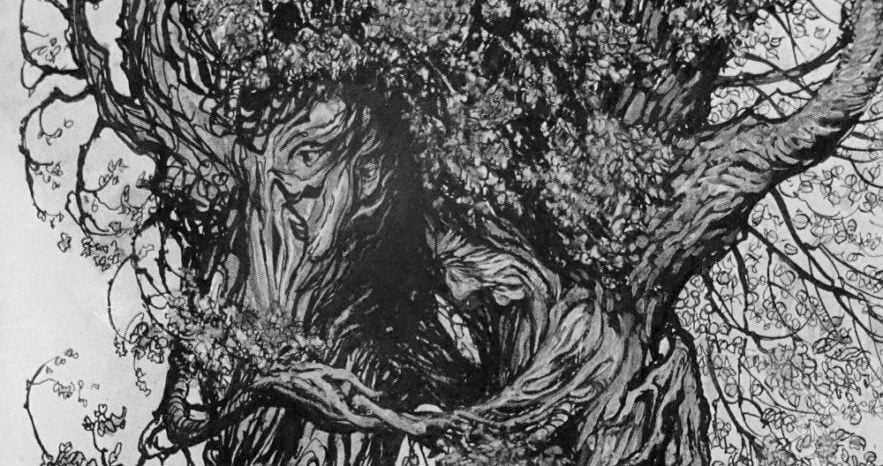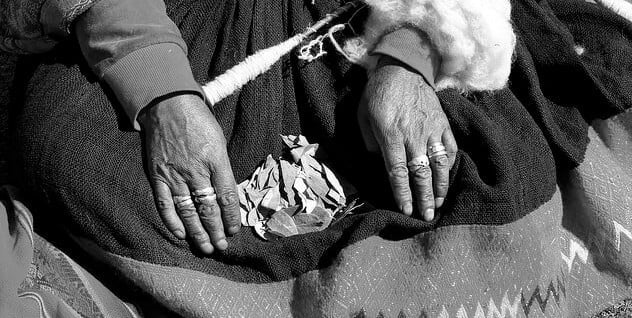Discover legends and folklore of the Frangipani – Plumeria in India, and its use in traditional Indian culture.
In this Article
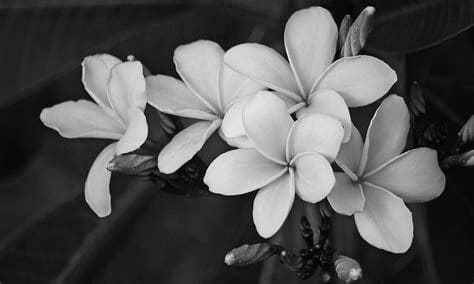
Family: Apocynaceae
Hindi: Champa
English:Temple tree, Pagoda tree, Frangipani, Plumeria.
Common names are Temple Tree or Pagoda Tree in India and the Far East, Graveyard Tree in the Caribbean Islands, Temple Flower in Sri Lanka, and May flower (for the time of flowering) in Nicaragua. Around the world the frangipani (plumeria) is called:
- Cocaloxochite (Aztec word).
- Tipanier in Tahiti.
- Dok jampa or Dok champa in Laos
- Pomelia and Frangipane in Italy
- Couleuvre, or Snake Tree in St.Barths Bois
- Kemboja kuning in Malaysia
- Pansal Mal in Sri Lanka
- Jepun in Bali, Indonesia
- Flor de Mayo in Yucatan, Puebla, El Salvador
- Flor de la Cruz in Guatemala
- Pumeli or Melia in Hawaii
- Amapola in Venezuela
- Kang Nai Xin in China
- Phool in India
- Hoa Su (Southern ), Hoa Dai (Northern) and Hoa Su Ma (ghost Plumeria) in Vietnam
- Kalachuchi in the Philippines
- Flor de Cebo in the Canary Islands
- Sacuanjoche in Nicaragua (the name is derived from the word “xacuan” from a native language called náhuatl and means “precious yellow feather or flower”.
- Devaga Nagale, God’s flower (in the dialect of Kannada, spoken in the Old Mysore region of Karnataka of southern India).

CC-BY-4.0, edited.
According to Hindus, Buddhists and Muslims, the tree is an emblem of immortality, because of its extraordinary capacity of continuing to produce flowers and leaves even after it has been uprooted.
For this reason the tree is frequently planted near temples by the Hindus and the Buddhists, where the flowers are also offered.
The Muslims plant it near graveyards, where daily, – the fresh blossoms fall upon the tombs and scent the air, the flowers smell sweet and strong.
Anecdote: In search of getting rich
Afortune teller once told the Frenchman Plumeria, to look for a tree whose flowers were the color of a frail new moon; whose fragrance overwhelmed the soul at night and which grew near the graveyards and temples.
Plumeria traveled far and wide in search of such a tree and finally reached India, where on making inquiries about such a tree, he was advised to go to a certain temple in South India at mid-night on a full moon night and when the scent of the flowers would take over the garden, he shall shake the tree and it would shed gold coins in plenty.
Plumeria did as he was advised. He shook the branches of the tree and soon the flowers fell in a heap, glistening like gold coins in the moonlight and the sweet scent of the flowers wafted his thoughts to heaven.
He then realized the wisdom of real wealth in life: the beauty of sweet-smelling flowers; the moonlit nights; the immortal skies. So, he gave up the idea of amassing earthly riches.
The official story of Frangipani – Plumeria:

The name, Plumeria, is attributed to Charles Plumier, a 17th Century French botanist who travelled to the New World documenting many plant and animal species.
He made three botanizing expeditions to the West Indies, which resulted in his Nova Plantarum Americanarum Genera (1703–1704). Plumier was appointed botanist to King Louis XIV of France.
Although according to author Peter Loewer (The Evening Garden: Flowers and Fragrance from Dusk Till Dawn. 2002) Plumier was not the first to describe Plumeria. That honor goes to Francisco de Mendoza, a Spanish priest who did so in 1522.
The other name, Frangipani, comes from the nobleman, Marquis Frangipani. According to the Oxford English Dictionary, Frangipani refers to a late 17th century nobleman. The story is that Marquis Muzio Frangipani, a Marshal of France, invented an almond-scented glove perfume that became the rage.
Leather gloves frequently stank, so the nobles perfumed them. Marquis Frangipani not only chose a scent for his gloves that became very popular, indeed, worn by King Charles IX (1550-1574) of France, but he developed a better method for perfuming gloves.
The food with a similar name, frangipane, almond-flavored paste, was reportedly developed about the same time by innovative French pastry chefs cashing in on the fad.
The plant Plumeria is called frangipani either because the glove perfume was made with frangipani flowers or alternately, the fragrance of the flowers reminded people of the glove perfume.
Depending on whether you are speaking Italian, French or English, frangipani can be spelled frangipan and frangipane. In English today, frangipane refers to almond-flavored foods and frangipani is the common name of the plant.
Books and websites tell us the story above, of Marquis Muzio Frangipani and the perfumed gloves but we could not find any confirmation that he actually existed. Born when? where? Died when? where? The mysterious Marquis Frangipani eludes us….

Historians don’t have the complete formula for the historic Frangipani perfume either, but it was reported to have been made from bitter almonds or from musk, ambergris and civet, in neither case with plumeria flowers.
Another version has it that the name, frangipani, comes from the French frangipanier which is a type of coagulated milk that the Plumeria milk resembles.

In Asia, a cream colored Plumeria is popular in weddings, when the groom and bride exchange Plumeria garlands.
The flowering Champa tree is a favorite motif in Indian temple and non religious sculpture, floral ornaments are often Champa flowers. Frangipani is used on jewelry too.
In Hindu culture, the flower means loyalty. Women put a flower in their hair on their wedding days to show loyalty to their husbands.
Ethnobotany of Frangipani – Plumeria
Ethnobotany is a multidisciplinary science that studies how people traditionally use plants – for food, clothing, shelter and their use for religious ceremonies and health care (Ethnomedicine).
The medicinal value of this Plumeria species in the treatment of a large number of human ailments is mentioned in Ayurveda, Charaka Samhita, and Sushrita Samhita. For millennia, the Indian population has depended mainly on plant-based crude drugs for a variety of ailments.
Plumeria is used to heal Malaria, Leprosy, Rheumatism, and abdominal tumors. The milky sap of the stem and leaf is applied to skin diseases such as herpes, scabies, and ulcers.
Plumeria obtusa
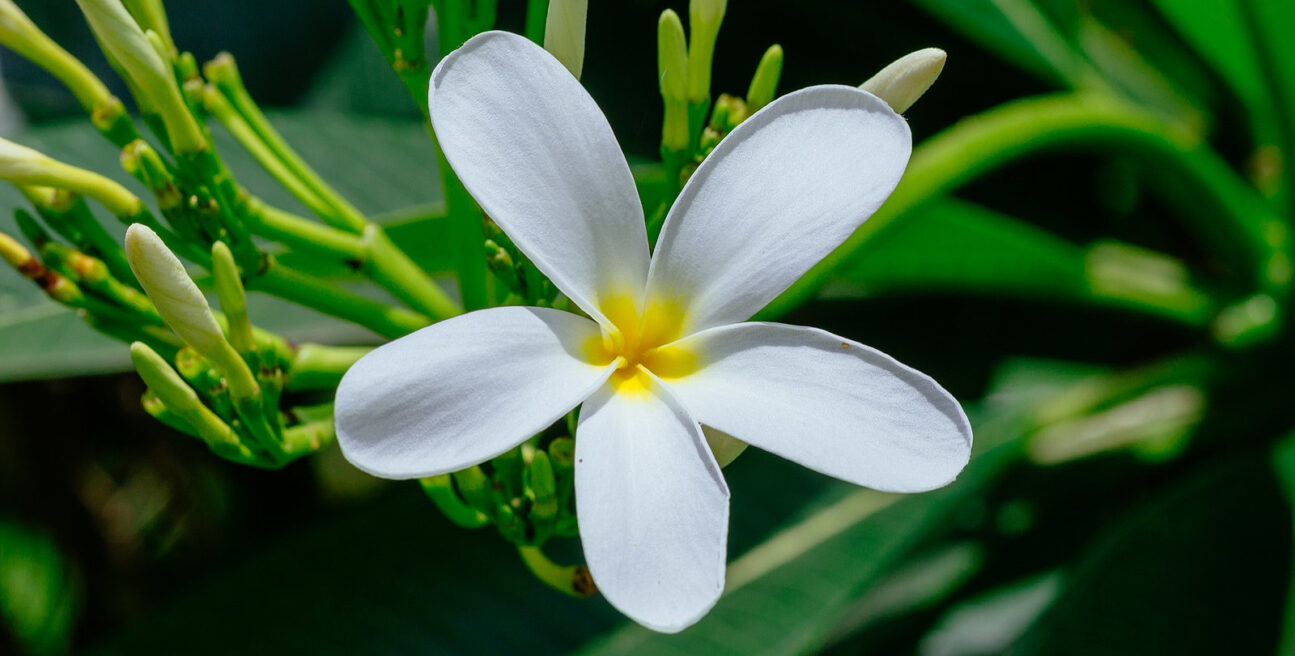
More than 130 chemical constituents have been isolated from Plumeria obtusa including iridoids, terpenoids, flavonoids, cardiac glycosides, phenolic acids, steroids, fatty acid esters, coumarin, cardenolide, cinnamic acid derivate and volatile oils.
The plant possesses a large or wide range of pharmacological activities such as:
- antimicrobial – help your body fight off, or inhibit the growth of bacteria, fungi, viruses, or other microbes,
- antiproliferative – prevent or retard the spread of cells, especially malignant cells, into surrounding tissues,
- antimutagenic – reduce formation of mutagens or carcinogens thereby preventing DNA damage,
- anti inflammatory – reduce pain, fever and other types of inflammation,
- antiulcerogenic – preventing the onset of ulcers,
- algicidal – kill or prevent the growth of algae,
- antioxidant – molecules that fight free radicals in your body,
- insecticidal – prevent the growth or spread of insects,
- wound healing – helps the replacement of destroyed or damaged tissue (skin) by newly produced tissue.
Ethnomedical uses of Plumeria obtusa L.
Plumeria alba Linn
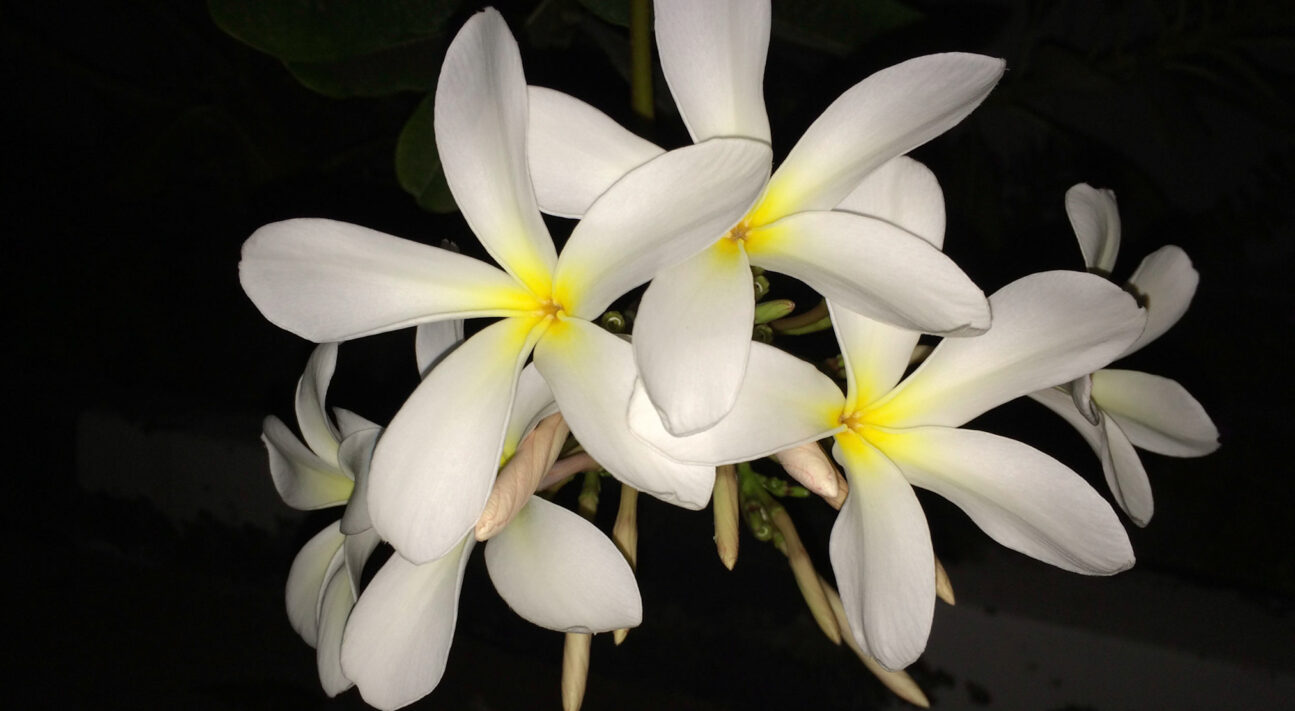
Dr. Sumeet Dwivedi shows in: Pharmacological, phytochemical, and traditional uses of Plumeria alba LINN., an Indian medicinal plant, that different parts of Plumeria alba, have been useful in a variety of diseases.
Its bark is used as plaster over hard tumors, the seeds in hemostasis ( mechanism that leads to cessation of bleeding from a blood vessel), while the latex is used as purgative (strongly laxative in effect), cardiotonic (stimulant for the central nervous system and the heart) , diuretic (increase the amount of water and salt expelled from the body as urine) , and hypotensive (lowering the blood pressure).
P. alba is also used in the treatment of ulcers, herpes, scabies, and seeds possess hemostatic properties. The bark is bruised as plaster over hard tumors.
Ethnomedical uses of Plumeria alba Linn
Plumeria alba might have the following properties:
| Frangipani petals | antibacterial, antimicrobial – prevent the growth or spread of bacteria, like E. coli, Proteus vulgaris, Staphylococcus aureus, Klebsiella pneumoniae, P. aeruginosa, Staphylococcus saprophyticus, Enterococcus faecalis, and Serratia marcescens |
| Leaves extract of P. alba | Larvicidal activity – kills Aedes aegypti mosquitoes . |
| P. alba extract | Hepatoprotective effect – prevents damage to the liver. Antifungal – prevent the growth or spread of fungus. |
| Hydroalcoholic extract from leaves of P. alba | Antiarthritic activity – relieves or prevent arthritic symptoms, such as joint pain or joint stiffness. |
Plumeria alba Essential oil
- cures infections, digestive diseases and is used as anti-inflammatory
- Warming oils – such as those from frangipani are said to have a calming influence on those suffering from fear, anxiety, insomnia or tremors, according to the principles of Ayurveda.
Leaves and bark are used as poultices (a healing wrap) for bruises and ulcers.
Latex (sap) is used as a liniment for rheumatism.
Note: This post does not contain medical advice.
Please ask a health practitioner before trying therapeutic products new to you.
If you do wish to experiment, I suggest doing further research.
~ ○ ~
Keep exploring:
Works Cited & Multimedia Sources
- Fergusson James. Tree and Serpent Worship in India. 1869.
- Gupta Shakti M.Plant Myths & Traditions in India. 1968.
- Loewer Peter. The Evening Garden: Flowers and Fragrance from Dusk Till Dawn. 2002.
- 20 Facts You May Not Know About Frangipanis (plumeria)


